“I am a specialist in life as a permanent crisis.” Thus defines himself Miquel Barceló, one of the most sought-after and internationally recognized Spanish artists alive today. His capacity for communication goes hand in hand with the scope and variety of his work: huge canvasses, small drawings, murals, engravings, book illustrations, ceramics, sculpture, opera staging, album covers, posters, television programmes
The art of sea caves, the ocean and the soul
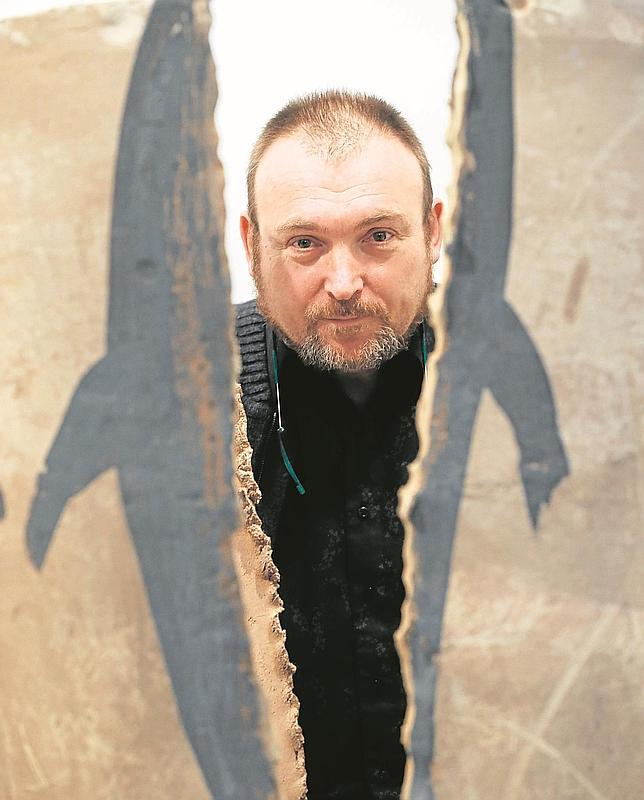
Miquel Barceló. Photo: Jaime García
“I am a specialist in life as a permanent crisis.” Thus defines himself Miquel Barceló, one of the most sought-after and internationally recognized Spanish artists alive today. His capacity for communication goes hand in hand with the scope and variety of his work: huge canvasses, small drawings, murals, engravings, book illustrations, ceramics, sculpture, opera staging, album covers, posters, television programmes ... Onto each and every one of those mediums, Barceló stamps his character, his energy and the "aggression" that distinguish his work - as well as his profound interest in Nature, whether that be in outdoor spaces or the life contained within them but always with a Mediterranean or African backdrop that connects his art directly with the land and the sea. His work is personal, original, complex and impossible to pigeonhole into any one artistic movement or context.
Adolescence, Nature and roots
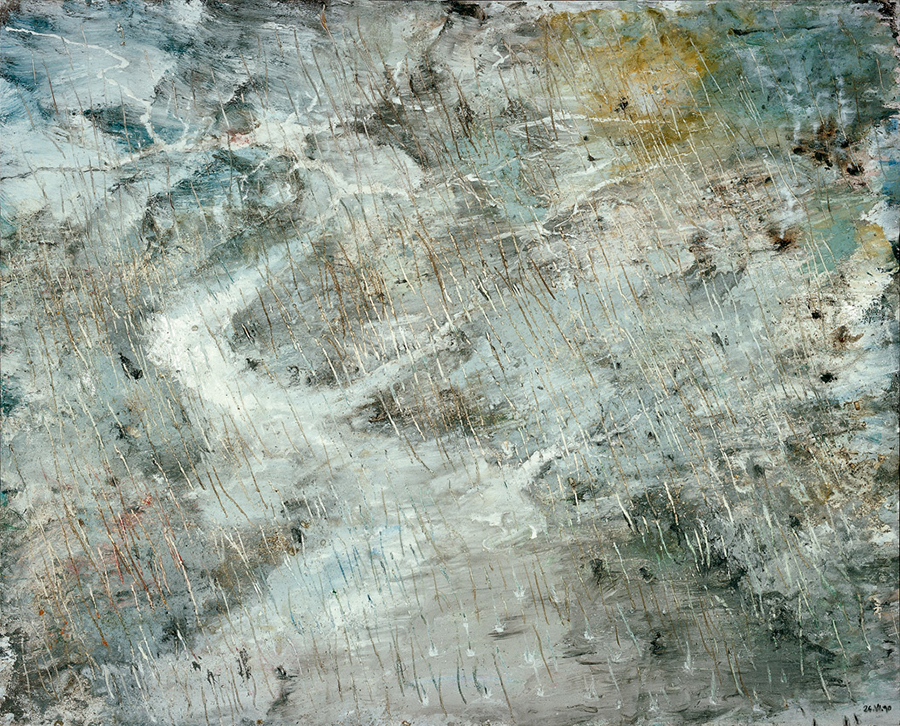
"The Flood" (1990). Guggehneim Museum, Bilbao
Miquel Barceló was born in 1957 in Mallorca, a Mediterranean island where the young artist first experimented with art. The influence of his mother, who herself was a painter for a time, might have had something to do with his desire to create but, without a doubt, art was already coursing through his veins. In Mallorca, "his island", where he became enamoured with the caves and the sea, he met Joan Miró who would have a profound influence on his early work (animal themes, which became a constant throughout his career, and a markedly Expressionist style). In his teens, he studied at the School of Arts and Crafts in the island’s capital - Palma de Mallorca - participating, aged 16, in his first collective exhibition – “Art Jovenívol” - and then organizing his first solo exhibition at the Picarol Art Gallery at 17. In the 1970s, Barceló travelled to Paris where he discovered the work of Klee and Dubuffet and also encountered Art Brut, a school with which he felt an intimate connection and which became a new starting point from which to explore new horizons.
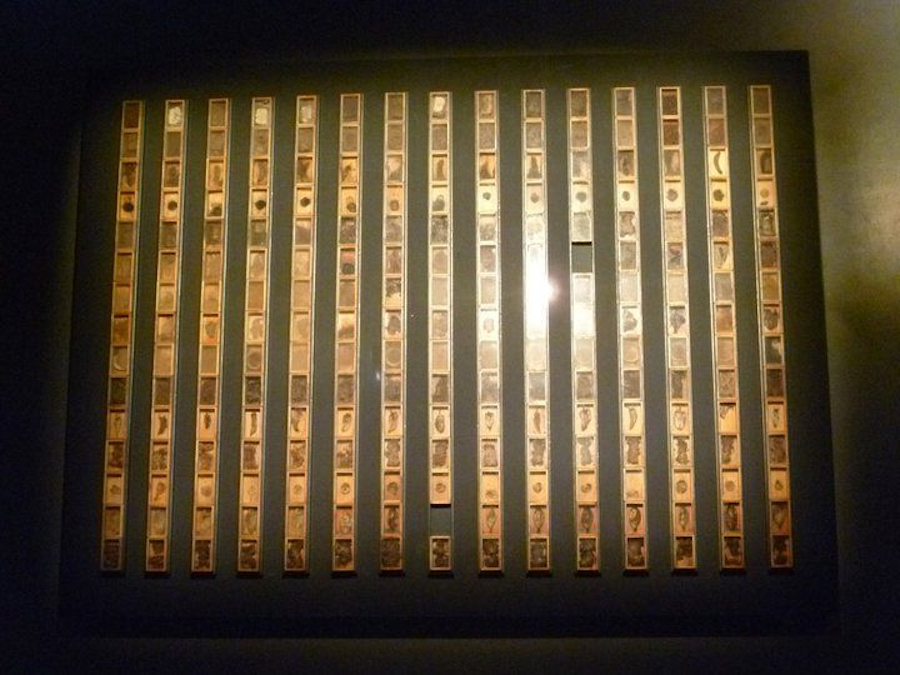
"Cadaverine 15" (1976)
Names such as Mark Rothko, Jackson Pollock, Willem De Kooning and Lucio Fontana then joined the list of his early influences, along with, of course, masters such as Velázquez, Tintoretto and Rembrandt who kept his work well rooted in excellence and classicism. During those years, he continued to demonstrate his concerns for both art and the environment, combining the organization of various exhibitions with activist action such as occupying the uninhabited Sa Dragonera island in 1977, with the aim of preventing its urbanisation. It is then that he meets and befriends the artist Javier Mariscal. From his very earliest years as an artist, Barceló made clear his deep affinity with Nature - always experimenting and incorporating natural and organic material into his works, with some of them embarking on their own journey of evolution over the passage of time. He would leave his paintings outdoors at the mercy of the elements which caused them to crack or rust. He also used organic matter, the deterioration of which was very much a part of its artistic significance, as seen in his exhibition “Cadaverine 15” (Mallorca, 1976) in which 225 glass-topped boxes containing organic and inorganic material showcased the process of decomposition and decay.
Success in Paris and the beginning of a nomadic life
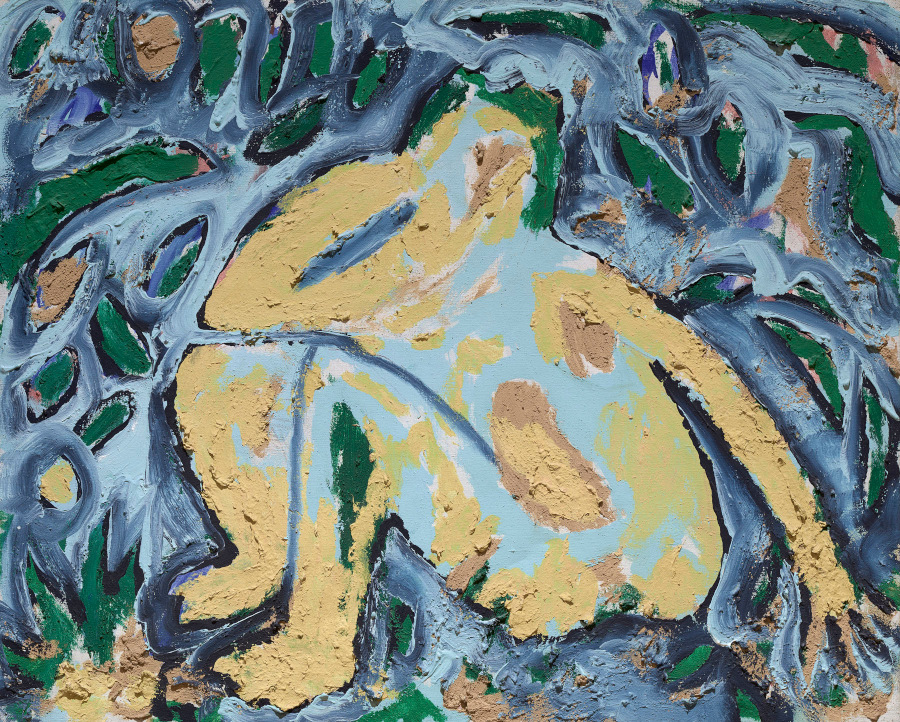
"Seated Venus Bruta" (1982)
Despite his deep-seated roots in Mallorca, Barceló's restless and curious spirit gave him itchy feet and he left the island in search of new locations for his art. In 1980, he landed in Barcelona and set up a studio there. That year, his career enjoyed a boost that would prove key to his future artistic career: he was the only Spanish artist selected to participate in the prestigious Kassel Documenta (Germany), in its seventh edition. He was still only 23 years old but showed a talent, a work ethic and a maturity that set him amongst the most important international creatives of the time. In fact, just two years later, he achieved the distinction of exhibiting in Paris, the art capital of the world, at the Yvon Lambert gallery. Success, however, did not mean that the young artist would rest on his laurels or settle down; in the ensuing years, Barceló would often move house and participate in various projects located in other European cities. This need to venture into other countries and experience other realities would almost become a lifestyle for the artist and would have a powerful influence on his work.
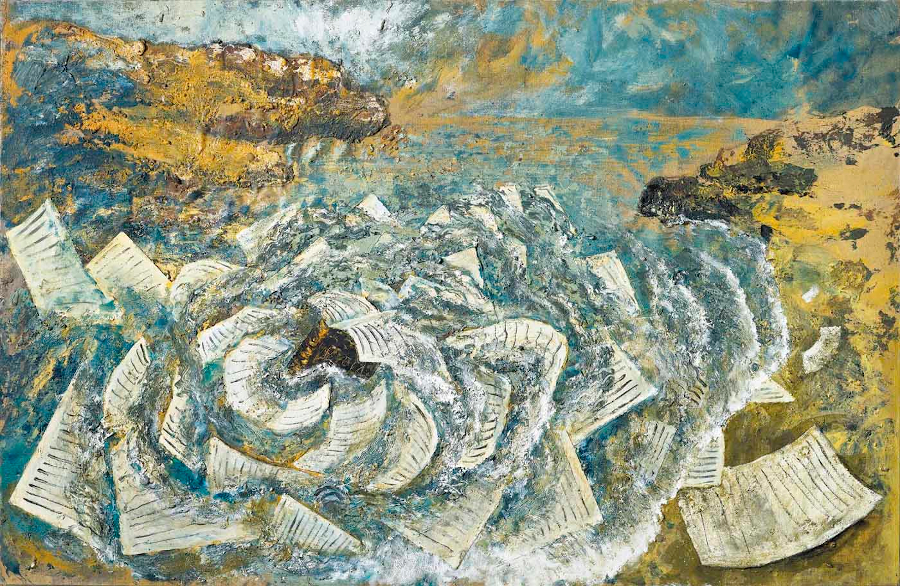
"Wet Novel" (1985)
Throughout his travels and multiple art projects, Barceló comes into contact with some of the most important figures in the art world of the time. Among them is the Swiss gallery owner Bruno Bischofberger, who was to have a decisive influence on his career and become his art dealer at international level. He also meets his future wife - the Frenchwoman, Cécile Franken. The year 1986 would see his fame cross the Atlantic to New York where he exhibits at the Leo Castelli gallery. He falls in love with the city and sets up a temporary studio there, in which he will work and live for several months. These are years of recognition for Barceló, an artist who had always been a legend in his homeland, and he receives the National Prize for Plastic Art in the painting category. Soon, the call of the homeland and the Mediterranean begin to become irresistible and he returns to Mallorca.
Trip to Mali: The beginning of a passion for Africa
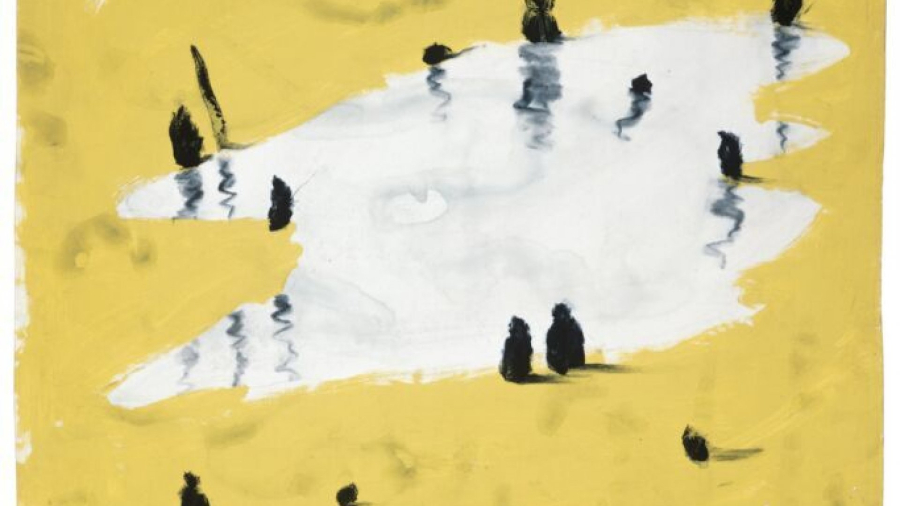
"In Mali" (1989)
Not a year goes by without Barceló’s restless spirit demanding new changes. In 1987, he travels to Paris and settles there, making the city his home from time to time, as it remains to this day. The following year will be a turning point in Barceló's life and work. He travels to Africa with a group of other artists but, instead of returning with them to Spain, he decides to stay on in Mali and also to travel around Senegal and Burkina-Fasso. These experiences are described in his "African Notebooks", written in both French and Catalan, which reveal the writer coexisting alongside the painter.
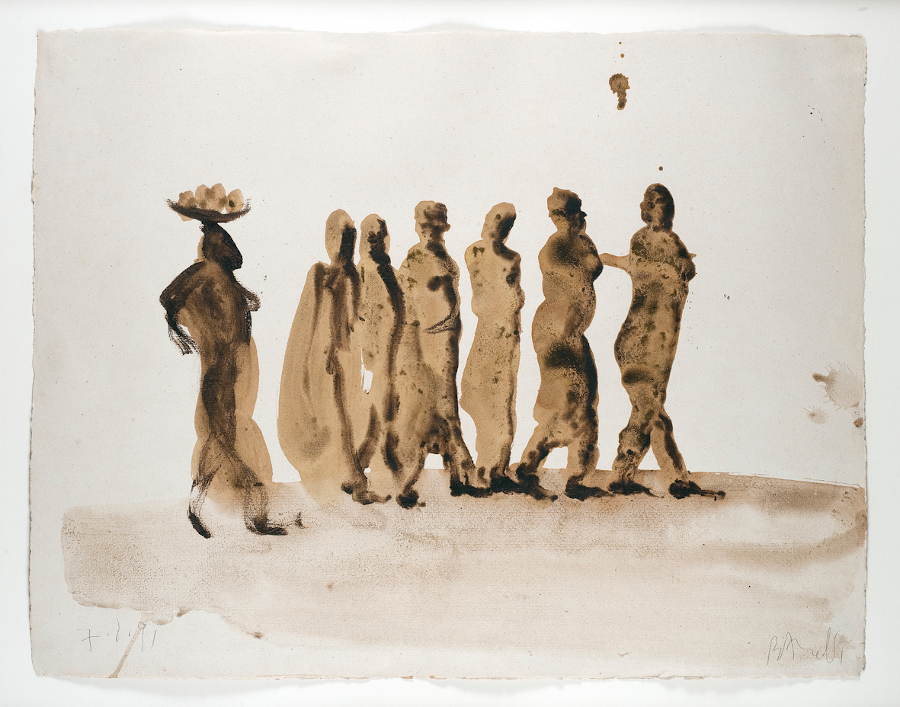
"Mali". Gouache on paper (1991)
Barceló then develops an intense love and deep connection with these peoples and places, as evidenced by the magnificent drawings that date from his time there. Contact with local people and life in the desert define his subject matter and methodology. He begins to show his concern for the natural environment, the passage of time and the origins in everyday scenes and small African landscapes, more detailed drawings, dense, dark raised surfaces that give the impression of reliefs, and for which he takes advantage of the mud and natural pigments he has at his fingertips. These works are now part of different public and private collections around the world, and have been displayed in several exhibitions, such as the one organized in 2008 by the Centre of Contemporary Art in Malaga. But Barceló does not limit himself to Africa and it is at this time that he adds a Mali workshop studio as a final corner to complete his vital triangle, along with Paris and Mallorca.
Awards and architectural projects
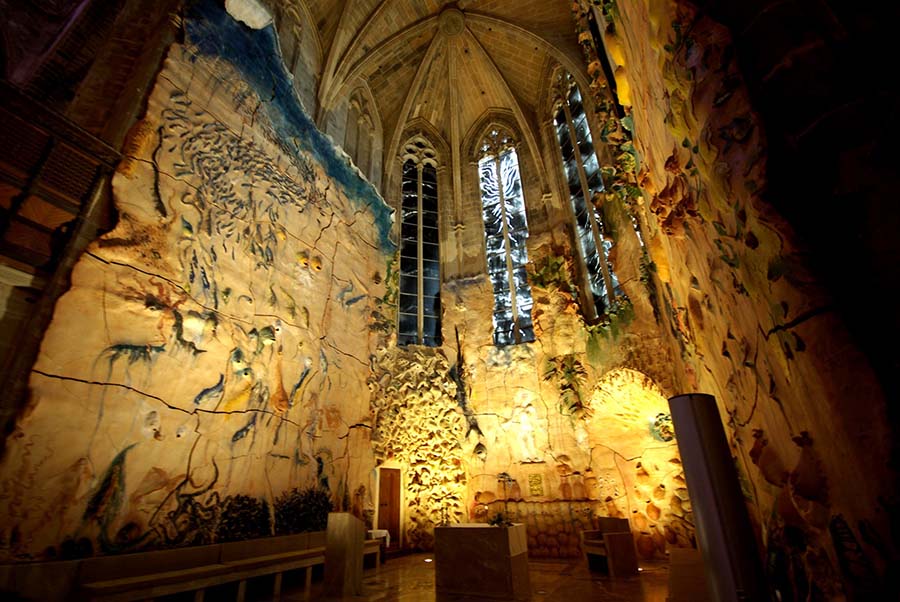
Chapel of Sant Pere in the Cathedral of Palma de Mallorca
1986 saw the beginning of his involvement with architectural projects, painting the dome of the lobby of the Mercat de las Flors Theatre in Barcelona. At that same time, 'velatura' starts to appear in his painting, along with overlays of materials giving the impression of transparency. Barceló continued to work without interruption and in 1995 he was selected to participate in the Venice Biennale and, three years later, the first major retrospective exhibition of his work was on display at the Museum of Contemporary Art in Barcelona. The awards kept coming over the decades until, in 2003, he was awarded the Prince of Asturias Prize for the Arts. The following year, the artist undertakes one of his most important projects to date - decoration of the Chapel of Sant Pere inside the Cathedral of Palma de Mallorca, which was completed in 2007. While the spectacular space underwent a renovation to its liturgical elements of stonework, stained glass windows and furnishings, Barceló also added a 300 m² ceramic mural representing "The Feeding of the Five Thousand". The work features a series of constants in Barceló's work - the sea, flora and fauna, grottoes and caves.
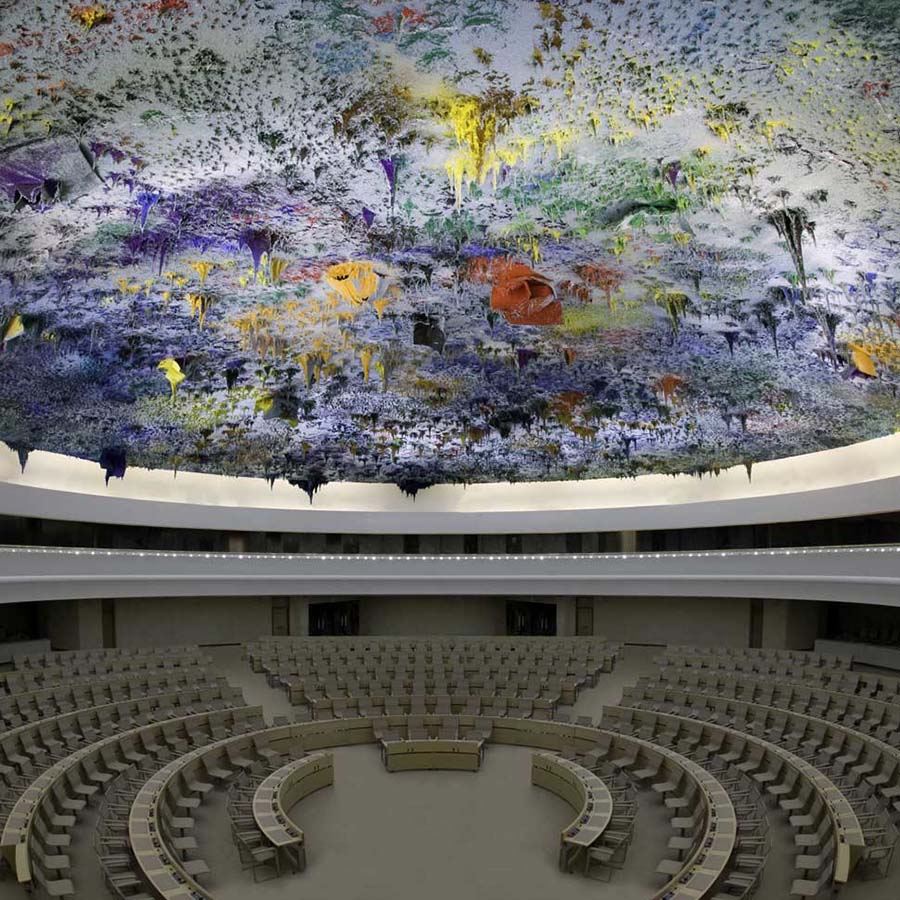
Dome of Room XX or the Human Rights and Allliance of Civilisations Chamber, UN European Headquarters, Geneva
The Dome of Room XX or the Human Rights and Alliance of Civilizations Chamber at the UN’s European headquarters in Geneva is one of his works with the greatest international import, albeit not without controversy due to its use of funds otherwise destined for Spain’s development aid budget. It is a huge 1,400 m² dome from which hang thirty-five tons of paint in the form of coloured stalactites, made with pigments sourced from all over the world. On the technique, Barceló commented: "I wanted to take painting against the laws of gravity to the extreme." and went on to explain: "On a day of intense heat in the middle of the Sahel Desert, I vividly remember seeing the mirage of an image of the world dripping skyward […] The cave is a metaphor for the agora, the first meeting place of human beings, the great African tree to sit under and talk about the only future possible, one with dialogue and human rights."
Work that branches out and grows on different terrains
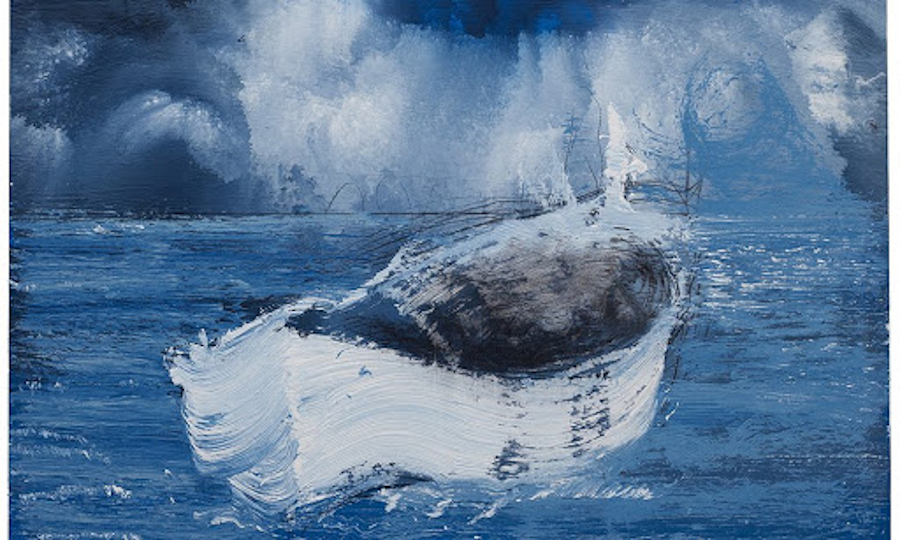
"Large Cove" (2018)
Barceló continues to expand his broad body of work at his three studios in Mallorca, Mali and Paris. His incessant and restless activity seeks an outlet in all kinds of media: illustrated books such as the poet Enric Juncosa’s "Book of the Ocean"; the forwards and texts of his own catalogues and notebooks; photography books such as "The Cathedral Under the Sea"; a book for the blind, "The Dismantled Shops or The Unknown World of Perceptions", with text in braille; and the three volumes of Dante's "The Divine Comedy" which were subsequently the subject of an exhibition at the Louvre in Paris.
Performance at the inauguration of the "Noah's Arc" exhibition (2017)
With his penchant for experimenting in every field of the arts, Barceló has also designed sets for opera. In Falla’s "Master Peter's Puppet Show" at the National Theatre of Comic Opera in Paris, he created the staging, costumes and large-scale puppets; and for Mozart’s “The Abduction from the Seraglio” at the Festival d'Aix-en-Provence in 2003, he took on the entire set decoration. More recently, Barceló has demonstrated his versatility and artistic passion via large exhibitions and personal interventions, such as his "Performance" in 2017 at the inauguration of "Noah’s Arc" at Salamanca University. Miguel Barceló interviewed by Elena Cué
Interview with Miquel Barceló. By Elena Cué
Exhibitions
Miquel Barceló. Spanish Pavilion at the Venice Biennale, 2009
In 2009, Barceló represented Spain again at the Venice Biennale in its 53rd edition. The exhibition showcased a series of large format canvasses from the previous nine years and also included ceramic pieces along with more recent work carried out during his decoration of the United Nations dome in Geneva.
“Miquel Barceló. 1983-2009” (2010)
“My life is like the surface of my paintings." This quotation from Barceló kickstarted an exhibition organized by the La Caixa Foundation and held at its headquarters in both Madrid and Barcelona. The show comprised a selection of 180 pieces completed between 1993 and 2010 and included some of his largest paintings alongside his sculpture "Big Elephant, Upright".
"Sol y Sombra (Sun and Shade)" (2016)
This exhibition opened in 2016 in one of Paris’s most iconic buildings - The National Library of France - which partnered with the city’s Picasso Museum to host a joint exhibition. Visitors were treated at both venues to the display of some never-before-seen pieces, enabling them to experience an authentic immersion in the Majorcan artist’s universe.
“Noah's Arc” (2017)
Salamanca University’s eighth centenary celebrations included a large exhibition of Barceló's work. The artist himself participated, performing during its inauguration. The exhibition took up four spaces at the university, as well as the city’s main square, with works from multiple disciplines: sculpture, ceramics, drawing and the performance itself.
"Miquel Barceló. Metamorphosis" (2021)
2021 began in Malaga with an exhibition held at the Picasso Museum, which included around one hundred works created by Barceló between 2015 and 2020. The exhibition took its name from Kafka's famous novel and comprised a selection of pieces on canvas and paper, as well as ceramics, notebooks and bronzes.
Books
Notebooks from Africa. (Galaxia Gutenberg Círculo de Lectores, 2008)
Barceló's journals from his stays in Africa between 1988 and 2000 have become an important body of work within his career. The entries compiled in this publication are interlaced with drawings, watercolours and gouaches from Mali, Senegal and Burkina-Fasso. The text, originally in French and Catalan and complemented by sixteen pictures, includes shopping lists, letters to friends, his fears and desires, details about the process of artistic creation, ... The writing is vivid, absorbing and the perfect accompaniment to the artistic output that immortalized Barceló's ‘Africa’ years.
Aurea Dicta. (La Casa dels Clàssics, 2018)
An authentic work of art, multi-award-winning and marked out for posterity. The Aurea Dicta project began in 1992 when a group of Catalan intellectuals set out to, in their own words, "for the first time, translate the Greek and Latin classics into modern-day Catalan in rigorous, entertaining and bilingual editions, in order to democratize and elevate the Catalan language and culture". The book is illustrated by Barceló in such a way that art dialogues directly with classical thought.
Un Grand Verre de Terre (A Large Glass Of Earth). (La Fábrica, 2020)
Once again, an artist's notebook that fuses Barceló's plastic artwork with an account of his lived experience and boasts beautiful photographs of the window panels he designed for the National Library of France in 2016. The images are especially important as this was a work of ephemeral art - the clay-on-glass fresco was dismantled by the artist himself at the close of the predetermined exhibition time. The notebook describes the process, sensations and end result of the work from the point of view of its creator. As the publisher points out, "a living work, designed to be observed from inside and outside the building, which introduced the visitor to an extraordinary exhibition".
(Translated from the Spanish by Shauna Devlin)
- Miquel Barceló: Biography, Works and Exhibitions - - Alejandra de Argos -



